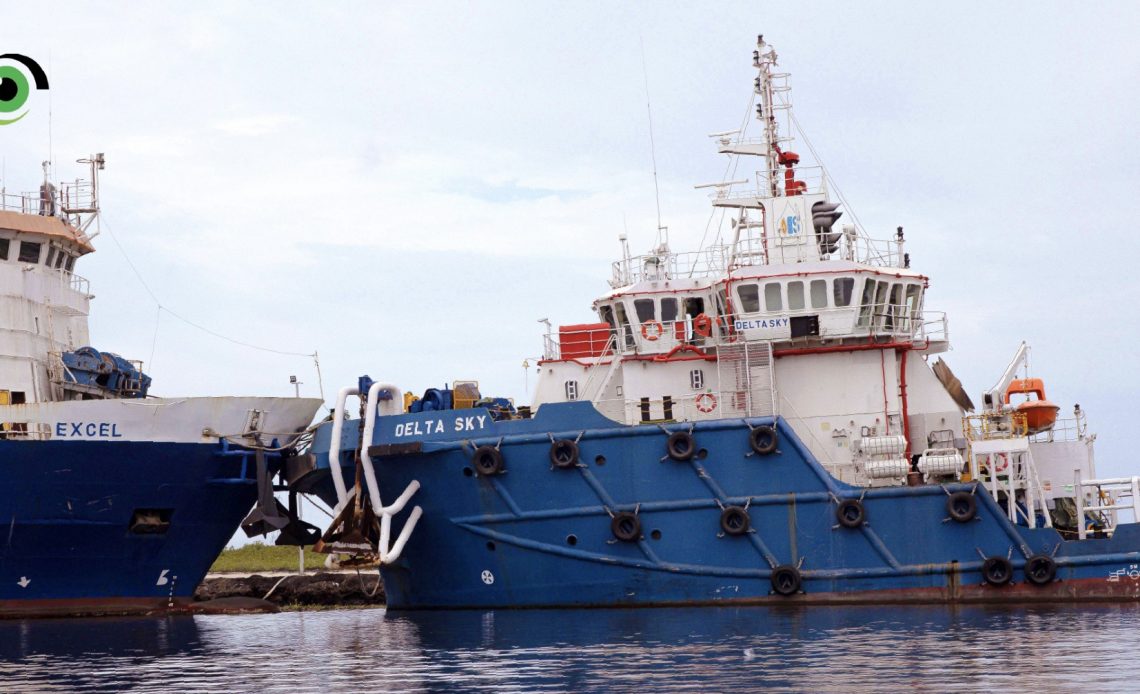It is impossible to predict when the next pandemic will occur, yet the risk of another occurrence remains high. The world’s susceptibility to these health emergencies is linked to the ease with which individuals and microbes traverse international borders, and with the rapid increase in global trade and travel. Changes in land use and rapid urbanisation has led to the destruction of habitats, increasing the risk of diseases spreading from animals to humans.
In addition to the significant benefits of globalisation, this interconnectedness has intensified the likelihood of disease transmission, posing a significant threat to public health. Points of Entry (PoEs), such as airports, seaports, and land crossings, serve as critical junctions within this global network by facilitating the movement of people and goods and promoting international commerce. Yet, if not adequately safeguarded, they could become a public health risk.

The intersection of health security and the maritime sector is a critical area of focus in global health. Historical and recent trends have shown increased infectious disease outbreaks from the maritime sector. As an example, the COVID-19 pandemic and the 1918 ‘Spanish influenza’ pandemic significantly impacted passengers aboard ships, leading to numerous outbreaks and increasing the risk for rapid disease spread. In a similar way, other infectious diseases, such as norovirus, have been frequently reported in cruise ship outbreaks. Therefore, it is important to strengthen health security measures through training and education on safety and risk assessment, for people working in the maritime sector.
“Finding the leaks”
In 2017, Nigeria was assessed as “not ready” to handle significant health security threats, with a ReadyScore of 39% in the first Joint External Evaluation (JEE). Some gaps identified during the assessment were an ineffective public health response and inadequate routine capacities established at points of entry. In response, Nigeria developed the National Action Plan on Health Security (NAPHS), a 5-year roadmap for implementing the JEE’s recommendations. Some of the recommendations from the JEE included the need to build the capacity of the port health service, in addition to other JEE priority actions to strengthen PoEs in Nigeria, such as designation of POEs, and improving intersectoral collaboration at POEs.

Since 2014, Pro-Health International, has been working with partners such as Dr. Ameyo Stella Adadevoh Health Trust (DRASA), and the Port Health Services Department of the Federal Ministry of Health, through the Integrated Response to Public Health Emergencies in Nigeria (IRPHEN) project funded by the United States Centres for Disease Control and Prevention (USCDC), to strengthen the capacity of the Department of Port Health Services in the Federal Ministry of Health to prevent, detect and respond to public health events at Nigeria’s PoEs.
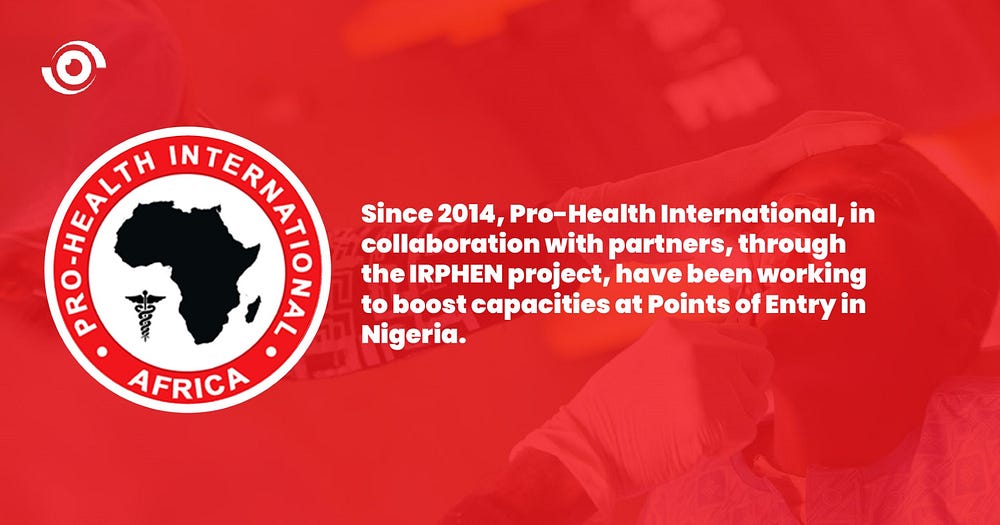
Following the results of the JEE, the IRPHEN project focused its efforts on addressing some of the JEE recommendations in line with the NAPHS.
Strengthening capacity at Points of Entry
According to Olaoluwa Akinloluwa, Technical Advisor for Pro-Health International, the journey to strengthening health security at Nigeria’s PoEs began with an assessment of existing capacities of IHR core capacities at PoEs, including Murtala Muhammed Airport (MMA), Nnamdi Azikiwe International Airport (NIA), Mallam Aminu Kano International Airport (MAKIA), and Apapa Seaport. The assessment was conducted using the World Health Organisation’s (WHO) assessment tool for core capacity requirements at designated airports and ground crossings.
“We applied the WHO tool across all the designated points of entry in Nigeria,” Akinloluwa explained. The assessment revealed that despite the lack of knowledge and equipment at Apapa Seaport, ship inspections to identify potential disease outbreaks were still being conducted and verified. In response to these findings, a comprehensive response plan was initiated in collaboration with the Federal Ministry of Health.
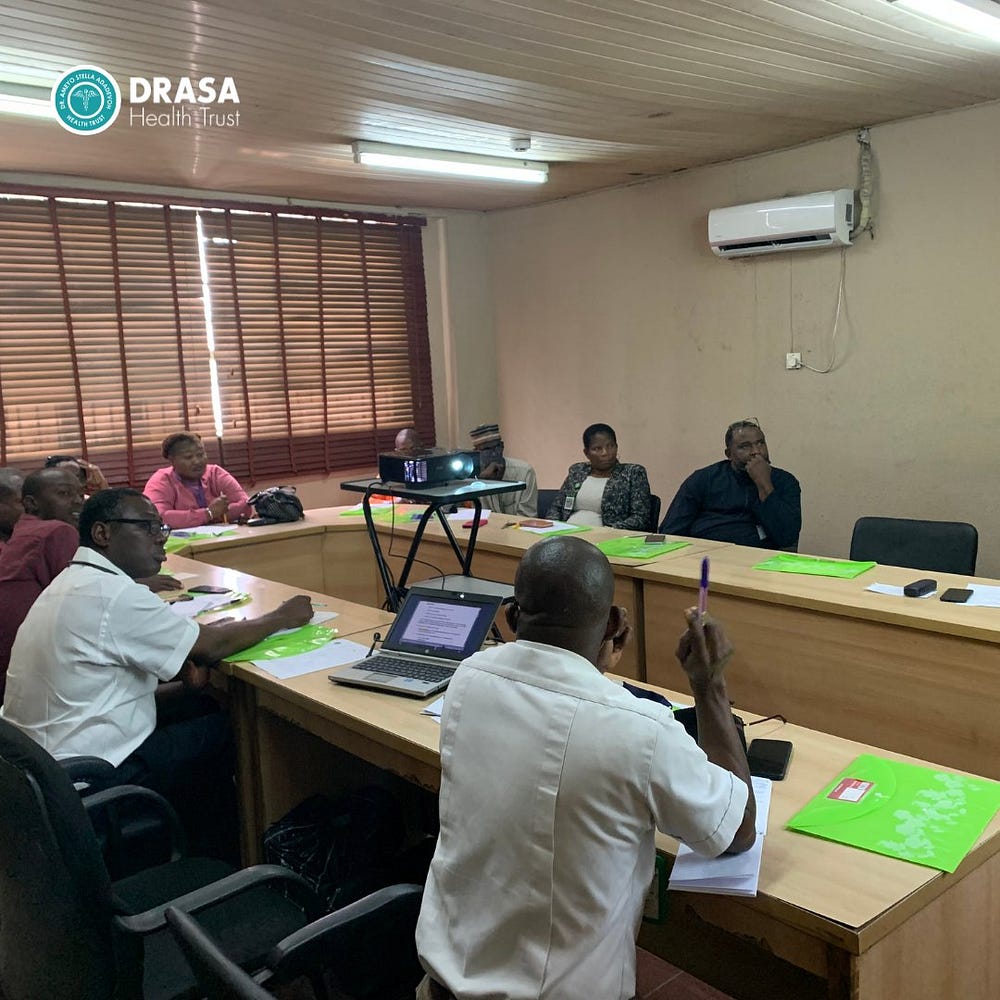
Niniola Williams, the Managing Director of DRASA, providing insight into the objectives of the project, emphasised that focus was also directed towards other possible hazards that can threaten humans besides infectious diseases. “The focus is primarily on strengthening the response to public health emergencies, with a special emphasis on infectious disease outbreaks. In addition to this, we also sought to improve defense against other hazards such as bombs, fires, and explosions, which could have a significant impact on human health,” she added.
What’s Working
-
PreventEpidemicsNaija: How a Media Strategy Contributed to Increasing Epidemic Preparedness Awareness in Nigeria
The #PreventEpidemicsNaija project advocates for sustained funding for the Nigeria Center for Disease Control and Prevention by working to increase understanding of epidemic preparedness. The project connects with and trains journalists from across the country to equip them with the necessary skills and resources to share accurate information with the public. So far the project has trained over 70 Journalists, produced seven fellows, and over 100 stories. Read more
The first step of the plan was to administratively designate Apapa seaport as a strategic entry point for Nigeria, where capacities needed to be built in accordance with the International Health Regulations (IHR). This specifically involved Annex 1B, of the IHR 2005 which outlines the core capacity requirements for designated airports, ports, and ground crossings.
For the second step, efforts were directed toward developing basic public health capacities for the staff of the Department of Port Health Services at the Apapa seaport. This involved assembling a team composed of representatives of Port Health Services, Nigeria Immigration Service, Nigeria Customs Services, Nigerian Ports Authority, Nigeria Police Force, The Nigerian Maritime Administration and Safety Agency (NIMASA), Nigerian Shippers Council and other relevant agencies to develop a Public Health Emergency Contingency Plan (PHECP) in July 2020, and subsequently test this plan through simulation exercises, and establish Public Health Emergency Management Teams (inter-agency teams working together and responsible for health security and the PHECP) at the seaport. This contingency plan also included all operating procedures to address all public health emergencies within and around the seaport.
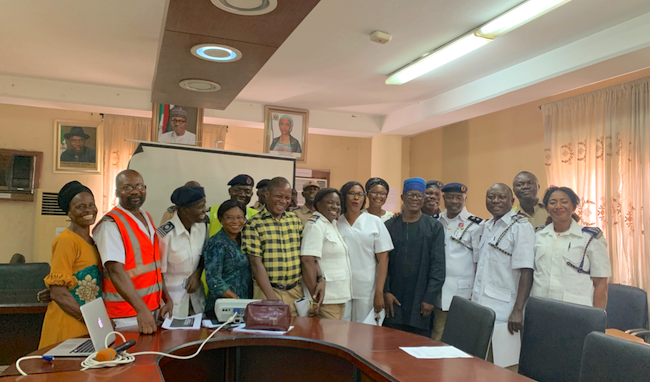
With the onset of the COVID-19 pandemic, the team also received several training sessions on infection, prevention and control measures such as identifying symptoms of various diseases and the correct protocols to follow, and these played a critical role in the country’s response to the pandemic.
A critical aspect of the capacity-building process involved establishing a seamless connection among key stakeholders. The seaport was linked to the state’s Public Health Emergency Response Structures, including ambulance services, Infectious Disease Hospitals, and the State Ministry of Health. This has helped to create synergy in the response to any public health threats in and around the seaport in the state.
“We worked on linking the seaports to the state’s Ministry of Health, to the infectious disease hospitals in the state and ensured that there is a contract between the seaports and the ambulance services and the Public Health Emergency Response structure in Lagos State. So that was achieved and was strengthened when COVID came around,” Akinloluwa said.
Intensifying Capacity Efforts at Points of Entry
According to Akinloluwa, the capacity-building exercise was further improved when the COVID-19 pandemic emerged as it revealed the need to further strengthen the capacity at the points of entry.
This led to a partnership with the WHO to set up a training programme, with two subject matter experts from the organisation who provided hands-on training on conducting inspections and issuing certifications. The training was delivered in two categories focused on responding to public health events onboard a ship, as well as ship inspection and certification. This training was conducted in-country, supported by Pro-Health International, and based on guidance material provided by stakeholders, including the WHO.
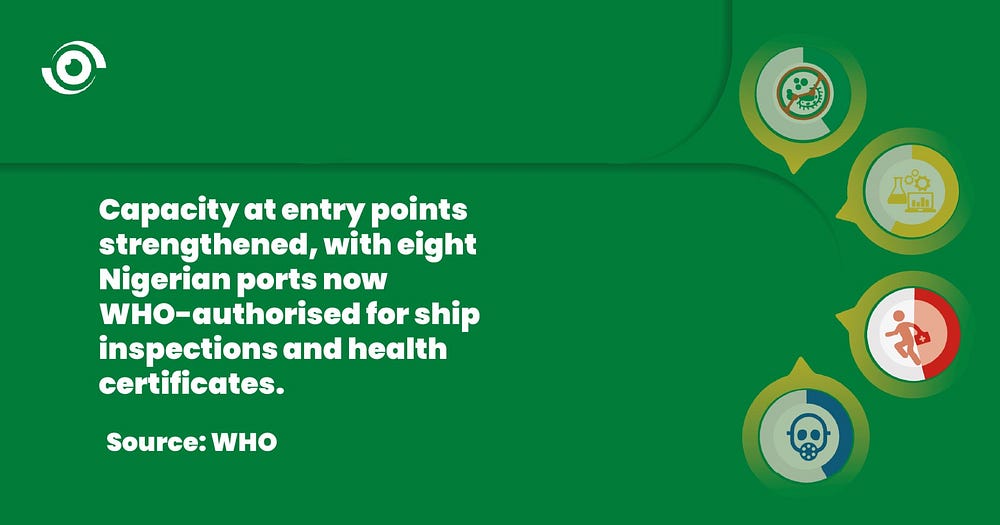
“We had a series of workshops to develop a guidance document, which we published and distributed to all the ports on responding to public health events in seaports,” Akinloluwa explained. This document provided detailed steps explaining how to respond when a ship reports a health event onboard.
The second category of training was on ship inspection and certification. This had two components: online training and in-person training. The online training was a prerequisite for moving forward with the certification programme and only after this would the in-person training be conducted (which was designed to be mostly hands-on). After this training sequence, the ports whose officers participated in the training were deemed to have the capacity to board and inspect ships and issue ship sanitation certificates.
“Swimming against the tide”
Onyekachi Nwitte-Eze, a Health Policy Officer at Port Health Services in the Federal Ministry of Health and Social Welfare, highlighted the transformative impact of capacity building at the Points of Entry (PoEs). She noted,” Prior to this, our surveillance system was not comprehensive. The staff at the PoEs were inadequately trained and lacked the ability to carry out essential health activities. Furthermore, we were missing crucial core capacity requirements such as ambulances, contingency plans, and inspection programs.”
Building capacity at Nigeria’s seaports has made a significant impact on the country’s ability to prepare for, prevent, detect, and respond to public health emergencies in the maritime sector as evidenced by the inclusion of eight Nigerian ports in the WHO’s list of authorised ports for ship inspections and health certificates including the Apapa Seaport. This development has also strengthened Nigeria’s role in global maritime health security and facilitated effective ship inspections.
Despite major achievements, one of the most significant hurdles the project encountered has been managing stakeholder engagement. In addition, the issuance of the ship inspection certificates represents a substantial increase in fees from what was initially charged. Despite reaching an initial agreement on the amount and method of payments, achieving full consensus among all stakeholders continues to be a challenge.
Another issue encountered, is the implementation of a single window for payments. The international standard dictates that ships make all payments related to their services at the ports in one transaction. While Nigeria is striving towards this goal, it is not yet fully operational.
The importance of fortifying capacities at Points of Entry (POEs), particularly seaports, especially as countries are more connected than ever, cannot be overstated. Given the unique nature of these entry points, continuous investment in maritime health security to build resilient public health systems is a crucial aspect of safeguarding national and global health security.


